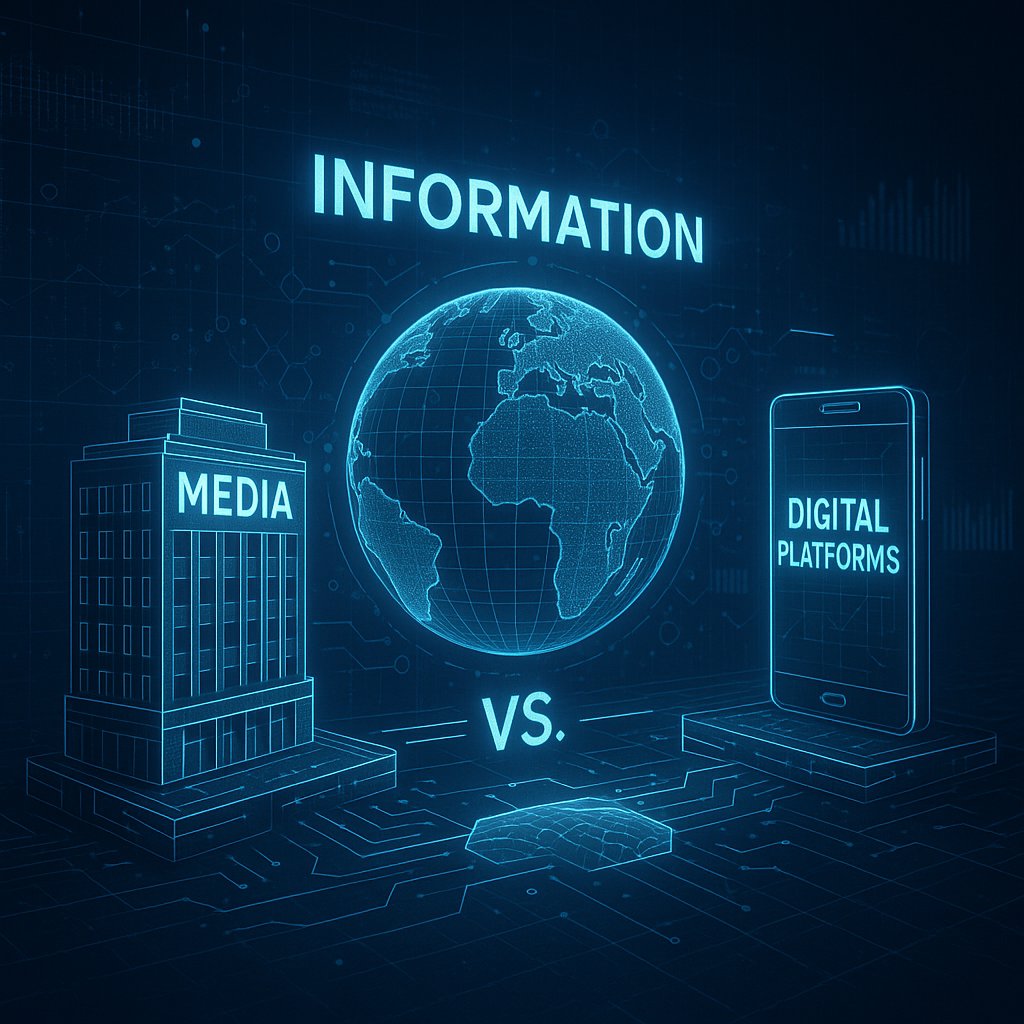Image created by AI
The Struggle for Truth: The Role of Media Companies in Combatting Platform Dominance
In an era marked by rapid digital transformation, the battle for control over quality information has never been more contentious. Traditionally, media companies have wielded significant influence over public knowledge and discourse, a power that has progressively been challenged by the rise of digital platforms. While platforms like Google, Facebook, and Twitter have often been criticized for contributing to the spread of misinformation, a thorough examination suggests that traditional media companies themselves bear a crucial part of the responsibility for not evolving swiftly enough to curb this trend.
For decades, larger media entities leveraged their gatekeeping status to control information flow, shaping public perception while often sidelining burgeoning competitors. This monopoly stemmed from an era when information was scarce and media channels were few. However, as digital technology democratized content creation and distribution, these companies faced a paradigm shift—they were no longer the sole custodians of information.
The slowness to adapt to this new reality has been palpable. Faced with declining revenues from traditional advertising models, many media companies clung to outdated paradigms, failing to innovate and thus gradually losing their audience to more agile, tech-savvy platforms. This reluctance to innovate not only deteriorated their market share but also contributed to a void filled by misinformation.
Moreover, the propagation of sensationalism and clickbait by media entities to capture fleeting online attention spans has further blurred the lines between credible journalism and misinformation. In their quest to remain relevant and profitable in a fast-evolving digital landscape, some legacy media outlets have sacrificed depth for sensationalism, confusing audiences and degrading trust in professional journalism.
Currently, we stand at a crucial juncture where misinformation is rampant, and public trust in media is alarmingly low. To combat this, media companies need to radically rethink their approaches. This includes adopting new technologies, engaging more transparently with their audiences, and perhaps most importantly, prioritizing the integrity of their content over mere viewership statistics.
One of the more promising strategies is a pivot towards subscription models and community-funded journalism, which emphasizes quality over quantity and fosters a direct relationship with the audience. Such models encourage media companies to align their goals with the interests of their subscribers, reducing the incentive to resort to sensationalism.
Furthermore, collaborations between traditional media houses and digital platforms could serve as a robust approach to combating misinformation. By leveraging the technological prowess of platforms and the content expertise of established journalists, these alliances could develop new standards for credibility and control the spread of false information.
Equally crucial is the role of regulatory frameworks. Innovative policies that ensure fairness in the digital advertising economy can help level the playing field for all content creators and curators. Ensuring that digital platforms operate transparently and are held accountable for the content they disseminate is fundamental to restoring trust in information sources.
In conclusion, while digital platforms certainly play a role in the dynamics of misinformation, the onus also significantly lies with traditional media companies to adapt and innovate. As guardians of information, they must lead the charge by embracing change, engaging responsibly with technology, and renewing their commitment to delivering reliable, insightful journalism that empowers society rather than dividing it.






